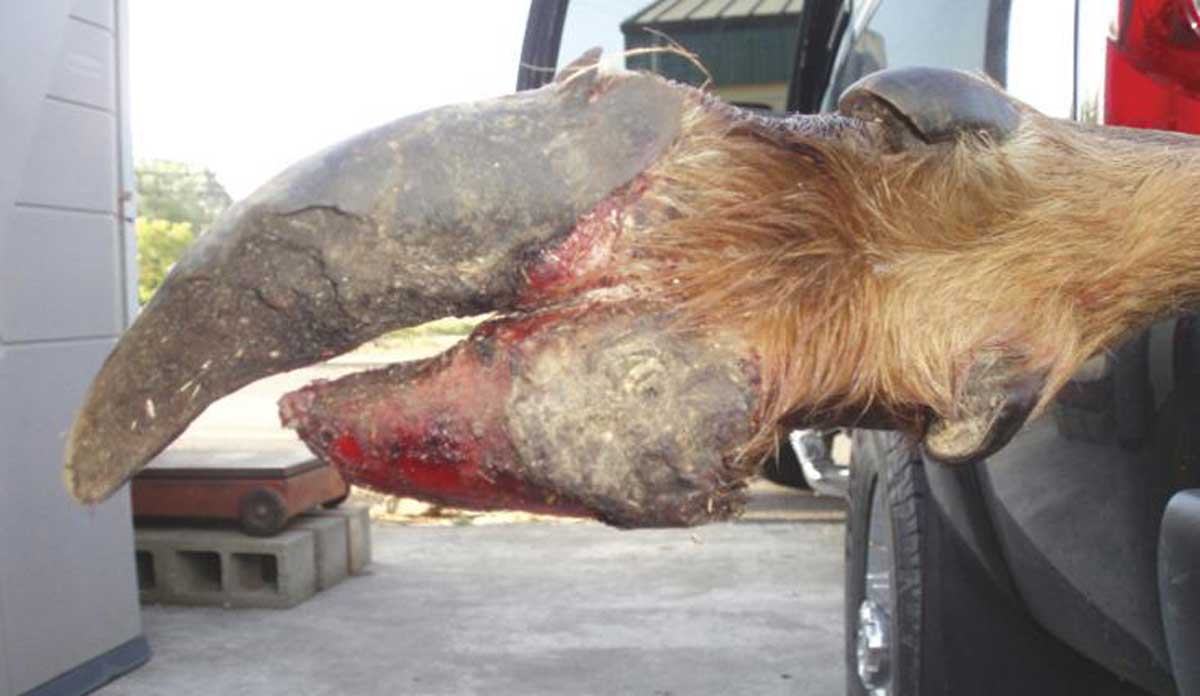For the first time, wildlife managers in Washington found elk on the east side of the Cascade Range infected with a crippling hoof disease that has spread to 11 counties in western Washington over the past decade.
Eric Gardner, head of the Washington Department of Fish and Wildlife (WDFW) wildlife program said results from a deformed hoof and direct observations of elk walking with a profound limp in the Trout Lake Valley of Klickitat County provide clear evidence that the disease has spread to that area.
“This is a huge concern for us and a lot of other people,” Gardner said. “This is a terrible disease and there’s no vaccine to prevent it and no proven options for treating free-ranging elk in the field.”
In response, state wildlife managers are preparing to euthanize any elk showing signs of the disease near the small town of Trout Lake, about 60 miles northeast of Vancouver. The goal is to stop it from spreading farther into eastern Washington, Gardner said.
“This is the first time the department has tried to stop the advance of the disease by removing affected elk,” said Kyle Garrison, WDFW hoof disease coordinator. “There’s no guarantee of success, but we believe a rapid response might contain this outbreak given the isolation of Trout Lake and the low prevalence of elk showing symptoms of the disease.”
He said the department plans to remove up to 20 symptomatic elk from the area in May. The Rocky Mountain Elk Foundation, which supports the proposed action, has pledged $2,000 to help defray the department’s costs.
Garrison and other WDFW wildlife managers will discuss the department’s plans at a public meeting from 6 to 8 p.m. Thursday, May 3, at the WDFW regional office at 5525 S. 11th St. in Ridgefield.
The first sign that the infectious disease had spread so far east came April 4, when a resident of Trout Lake sent the department a deformed hoof from an elk killed in a vehicle collision near his home, Garrison said.
On April 17, a WDFW staff team searched the area for other elk that might have been infected. They observed at least seven elk walking with a pronounced limp – a common symptom of the disease – and shot one limping animal to obtain hoof samples for testing.
Tests at Colorado State University’s Veterinary Diagnostic Laboratory and the USDA National Animal Disease Center confirmed both elk had hoof disease, Gardner said.
“We need to act quickly if we hope to get ahead of this situation,” Garrison said. “Elk in lowland areas begin to disperse into summer grazing areas by the end of May.”
WDFW staff met this week with local landowners to discuss the upcoming action and to gain permission to enter their property, Garrison said. The department plans to contract with USDA Wildlife Services to euthanize symptomatic elk, and Washington State University’s College of Veterinary Medicine will test tissue samples.
“The college is cooperating with Washington Department of Fish and Wildlife and other agencies in accordance with direction from the Washington Legislature to research elk hoof disease,” said Dean Bryan Slinker. WSU pathologists will conduct post-mortem examinations of the euthanized elk and will collect as many tissue samples as possible, he said.
For the past decade, WDFW has worked with scientists, veterinarians, outdoor organizations, tribal governments and others to diagnose and manage the disease.
(Photo c/o Larry Gitch)
